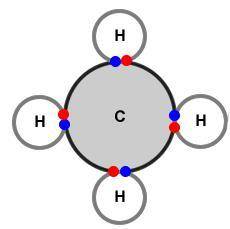
Chemistry, 11.10.2020 01:01 officialrogerfp3gf2s
What conclusion about bonding can be drawn from these diagrams?
A) In ionic bonding the valence electrons are combined while the valence electrons are electrostatically portioned during non-polar covalent bonding.
B) The valence electrons are shared between both atoms in covalent bonding while the valence electrons are completely transferred in ionic bonding.
C) Valence electrons reside in a sea of electrons in metallic bonding while valence electrons are permanently exchanged during crystalline bonding.
D) During amorphous bonding the valence electrons are unevenly shared between the atoms while the valence electrons are borrowed in polar covalent bonding.


Answers: 3
Another question on Chemistry

Chemistry, 22.06.2019 11:30
Aperfume bottle is dropped in the corner of a room. the odor of the perfume can be detected on the other side of the room. which statement best describes this observation?
Answers: 2

Chemistry, 23.06.2019 05:30
The image compares the arrangement of electrons in two different neutral atoms. a figure labeled atom q has a shaded sphere at the center of three concentric circles. the innermost circle has two black spheres. the middle circle has six black spheres. to the left of this figure is another figure labeled atom p. atom p has a shaded sphere at the center of three concentric circles. the innermost circle has two black spheres. the middle circle has seven black spheres. which of the following best explains the position of the two atoms in the periodic table? atom p has an estimated zeff of 7 and is therefore to the left of atom q, which has a zeff of 6. atom p has an estimated zeff of 7 and is therefore to the right of atom q, which has a zeff of 6. atom p has an estimated zeff of 5 and is therefore below atom q, which has a zeff of 4. atom p has an estimated zeff of 5 and is therefore above atom q, which has a zeff of 4.
Answers: 3

Chemistry, 23.06.2019 06:30
(04.05 hc) analyze the given diagram of the carbon cycle below. an image of carbon cycle is shown. the sun, a cloud, two trees, one on the left and the other on the right, an animal, lake, and a factory are shown in the image. an arrow is shown from the sun towards the left tree marked a. the sun is marked b. there is an arrow from the air above the clouds, marked c, towards the left tree. an arrow from a location close to the ground marked d points towards dead organisms, which is a label under the animal. an arrow marked e points from the right tree straight up to the clouds. an arrow marked f points from the animal straight up to the clouds. an arrow marked g points from the factory towards the air above the clouds, c. there is an arrow pointing from the air to the lake labeled carbonates in water, an arrow pointing down from dead organisms to fossils and fossil fuels, and an arrow from fossils to the factory. part 1: which compound does c represent? part 2: name a process that could release this compound into the air. part 3: explain how the elements that form it are conserved during the carbon cycle. use complete sentences to explain your answer.
Answers: 2

Chemistry, 23.06.2019 12:00
Which of the following involves only abiotic factors? a. a large rock being weathered by wind and rain b. an otter using a stone to break open a sea urchin c. a spider building a web in the corner of a building d. a pine tree absorbing light from the sun
Answers: 1
You know the right answer?
What conclusion about bonding can be drawn from these diagrams?
A) In ionic bonding the valence ele...
Questions


History, 18.07.2019 05:10

Biology, 18.07.2019 05:10

Mathematics, 18.07.2019 05:10



Mathematics, 18.07.2019 05:10



History, 18.07.2019 05:10



Mathematics, 18.07.2019 05:10


History, 18.07.2019 05:10


Social Studies, 18.07.2019 05:10

Physics, 18.07.2019 05:10

Mathematics, 18.07.2019 05:10



